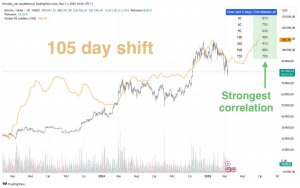The Federal Reserve’s Interest Rate Cuts: A Historical Precursor to Recessions?

The relationship between the Federal Reserve’s decisions to cut interest rates and the subsequent occurrence of recessions has been a topic of considerable interest and debate among economists, policymakers, and investors. Examining historical data dating back to 1957, it’s notable that in the nine recessions within this period (excluding the COVID-19 recession), the Federal Reserve indeed implemented interest rate cuts.
Historical Trends:
The Federal Reserve employs interest rate adjustments as a tool to influence economic conditions. Traditionally, lowering interest rates is expected to stimulate economic activity by making borrowing more attractive and increasing spending. However, an intriguing pattern emerges when scrutinizing the historical data. Despite the economic theory supporting the positive impact of rate cuts, these actions by the Fed often preceded recessions.
Stock Market Reactions:
Another intriguing aspect is the correlation between rate cut campaigns and substantial stock market crashes in the last two instances. While lower interest rates theoretically encourage investing, the market’s response has at times been counterintuitive. This suggests that other factors, such as market sentiment, global economic conditions, or concerns about future economic uncertainties, might be influencing market behavior more prominently.
Economic Dynamics:
The complexity of economic systems makes it challenging to draw direct causal relationships. Rate cuts inject more money into the economy, but their impact can be influenced by various factors, including consumer sentiment, business investment, and global economic conditions.
Considerations for the Future:
As the global economic landscape evolves, it is essential to consider the nuances of each economic period. While historical trends can provide insights, the unprecedented events of recent years underscore the importance of adapting economic models to changing realities.
The Anomaly of COVID-19:
The COVID-19 recession, an unprecedented global crisis, presents a unique deviation from the historical pattern. The Federal Reserve swiftly cut interest rates in response to the pandemic’s economic impact, but the nature of this recession was vastly different from those driven by typical economic cycles.
Conclusion:
The correlation between Federal Reserve interest rate cuts and subsequent recessions is a phenomenon worth exploring, but it remains a complex and multifaceted relationship. Economic indicators, market dynamics, and global events all contribute to shaping the outcomes. As we navigate the intricate web of economic factors, policymakers and economists must continually reassess strategies and remain vigilant to emerging trends to promote economic resilience and stability.
Sources:
“Federal Funds Effective Rate.” FRED, 2 Jan. 2024, fred.stlouisfed.org/series/fedfunds#. Accessed 21 Jan. 2024.





